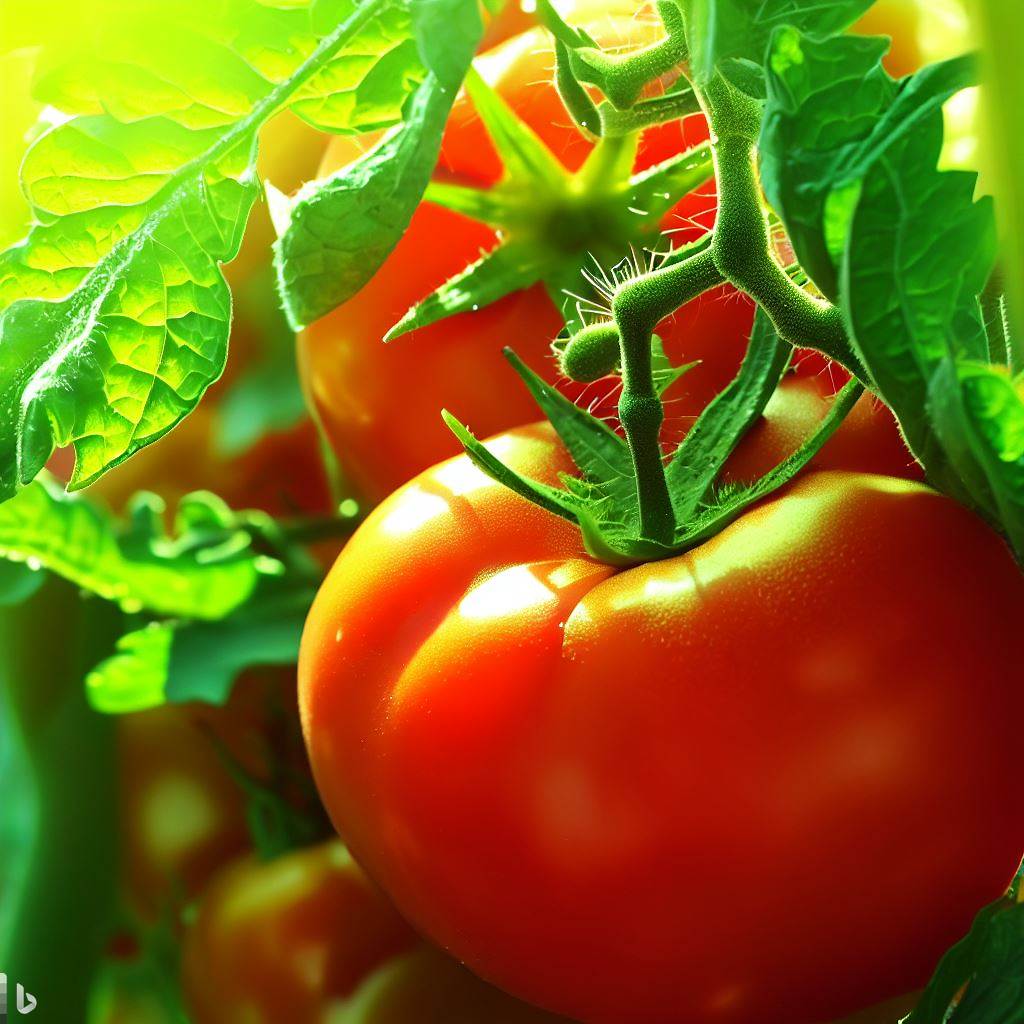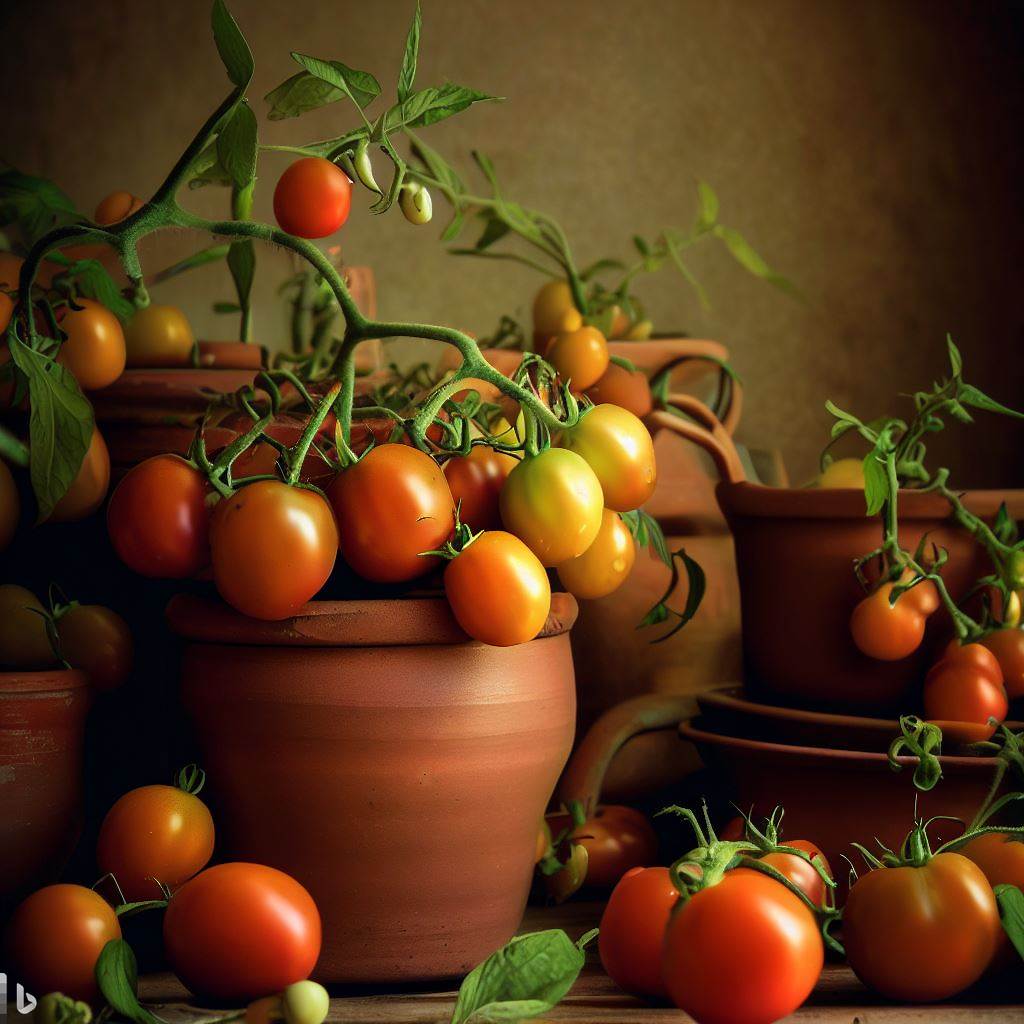Companion planting is a time-honored gardening tradition, a natural way to enhance your garden and encourage the growth of your plants. A careful selection of companion plants can significantly improve the success of your crop.
Companion planting plays a crucial role in enhancing the health, yield, and flavor of your tomatoes. Good companion plants for tomatoes include onions, marigolds, carrots, cucumbers, nasturtiums, and zinnias. They can deter pests, conserve soil moisture, and attract beneficial insects, collectively promoting a healthier, more productive tomato crop. Bad companions, such as potatoes, corn, and kohlrabi, can increase disease risk, attract pests, and stunt tomato growth.

The Tomato Plant: A Brief Overview
Before we dive into the world of companion planting, let’s take a moment to appreciate the star of our show: the tomato plant. Tomatoes are a beloved staple in many gardens, and for good reason. They’re versatile, delicious, and with the right companions, they can truly thrive.
Tomatoes are warm-season plants that love the sun. They require a good six to eight hours of sunlight each day. They prefer well-drained soil rich in organic matter, and they need consistent watering. Tomatoes are heavy feeders, meaning they require a good amount of nutrients to produce their best fruit.
🍅 Tomato Tips: Tomatoes are susceptible to a number of pests and diseases. Companion planting can help deter pests and prevent diseases, making your tomato plants healthier and more productive. 🍅
So, now that we know a bit more about our tomato plants and their needs, let’s explore who their best plant buddies are in the garden!
Friends and Foes of Tomato Companion Planting
In the world of gardening, not all plants play nice with each other. Some are best buddies, while others… well, let’s just say they wouldn’t be caught dead at the same garden party. Let’s meet the friends and foes of tomato companion planting.
Friends: Beneficial Companions for Tomatoes
First up, let’s talk about the friends. These are the plants that play nice with tomatoes, helping them grow stronger and healthier.
 | Onions: The Tomato’s Tear-Jerking Friend Onions and tomatoes are a classic pairing, both in the garden and in the kitchen. Onions can help deter pests that love to munch on tomato plants, like aphids and certain types of beetles. |
 | Marigolds: The Tomato’s Colorful Ally Marigolds are not just pretty faces. These vibrant flowers can help deter nematodes, tiny soil-dwelling pests that can damage tomato roots. |
 | Carrots: The Tomato’s Underground Buddy Carrots and tomatoes make a great team. The carrots help to loosen the soil, allowing tomato roots to grow more easily. Plus, they don’t compete for space since they occupy different soil levels. |
 | Cucumbers: The Tomato’s Cool Companion Cucumbers and tomatoes have similar growing requirements, and they can help each other out. Tomato plants can provide a bit of shade for cucumbers, helping them stay cool in the heat of summer. |
 | Nasturtiums and Zinnias: The Tomato’s Flowering Friends These beautiful flowers can attract beneficial insects to your garden, which can help keep pest populations in check. |
Other Noteworthy Companions for Tomatoes
There are many other plants that can benefit tomatoes, including basil, beans, and borage. Each has its own unique way of helping out tomato plants, from improving flavor to deterring pests.
🍅 Tomato Tips: Companion planting is all about creating a mini ecosystem where the different plants help each other out. It’s like a neighborhood watch for your garden! 🍅
Foes: Plants to Avoid Planting with Tomatoes
Now, let’s talk about the foes. These are the plants that can cause problems for tomatoes, either by attracting pests or competing for resources.
 | Potatoes: The Tomato’s Unwelcome Relative While tomatoes and potatoes are related, they’re not the best of friends. They’re susceptible to many of the same diseases, so planting them together can lead to trouble. |
 | Corn: The Tomato’s Tall and Thieving Acquaintance Corn and tomatoes are not a good mix. Corn can attract tomato pests like the tomato fruitworm. Plus, corn is a heavy feeder and can compete with tomatoes for nutrients. |
 | Kohlrabi: The Tomato’s Bulbous Bully Kohlrabi and tomatoes don’t play nice. Kohlrabi can stunt the growth of tomato plants, so it’s best to keep them apart. |
🍅 Tomato Tips: Always rotate your crops each year to prevent the build-up of diseases and pests in the soil. 🍅
So there you have it, the friends and foes of tomato companion planting. Remember, a good neighbor can make all the difference, even in the garden!
Companion Planting in Different Settings
Just as every gardener is unique, so too are their gardens. Whether you’re working with a spacious greenhouse, a cozy raised bed, or a compact container, companion planting can be a game-changer. Let’s explore how to make the most of companion planting for tomatoes in different settings.
Companion Planting for Tomatoes in Containers
Container gardening is a fantastic option for those with limited space, and yes, companion planting can absolutely be done in containers. Container gardening allows you to control the soil, water, and light conditions more precisely, which can be a big advantage.
When planting tomatoes in containers, consider pairing them with herbs like basil or parsley. These plants have similar watering needs and grow well together. Plus, they’re often used together in recipes, so you’ll have the ingredients for a fresh tomato-basil salad right at your fingertips.

Companion Planting for Tomatoes in Raised Beds
Raised beds offer a lot of flexibility when it comes to companion planting.
🍅 Tomato Tip: Raised beds warm up faster in the spring, giving you a head start on the growing season! 🍅
In a raised bed, you can plant tomatoes alongside carrots, onions, and marigolds. The carrots and onions can help deter pests, while the marigolds can help attract beneficial insects. Just remember to give your tomato plants plenty of space to grow!
Companion Planting for Tomatoes in Greenhouses
Greenhouses can be a tomato lover’s dream. They offer protection from the elements and can extend the growing season.
In a greenhouse, consider planting tomatoes with cucumbers and basil. These plants thrive in similar conditions and can benefit from the controlled environment of a greenhouse.
Remember, no matter where you’re gardening, companion planting is all about creating a supportive community of plants that help each other grow. Happy planting!

Companion Planting for Pest Management
One of the most magical aspects of companion planting is its ability to help manage pests. Some plants can deter pests, while others can attract beneficial insects that prey on pests!
When it comes to tomatoes, there are several companion plants that can help keep pests at bay. Marigolds, for example, can deter nematodes, tiny soil-dwelling pests that can damage tomato roots. Onions can help fend off aphids and certain types of beetles. And nasturtiums can attract beneficial insects that prey on pests like aphids and whiteflies.
🍅 Tomato Tip: Remember, a diverse garden is a healthy garden. The more variety you have, the less likely you are to have a major pest outbreak!
So, next time you’re planning your tomato garden, consider their companions not just as friends, but as allies in the fight against pests!
In the world of gardening, tomatoes and their companion plants are like the dynamic duos of the plant kingdom.
From onions and marigolds to carrots and cucumbers, these companions help each other thrive, whether in containers, raised beds, or greenhouses. They’re not just friends, they’re allies, helping each other fend off pests and flourish.
This YouTube video by Next Level Gardening provides comprehensive information on good companion plants for tomatoes. The host, Brian, discusses 14 plants that can help keep tomatoes pest and disease-free, and also control weeds. He debunks some common myths about companion planting and emphasizes evidence-based strategies. The video covers various pests like hornworms, stink bugs, flea beetles, aphids, thrips, and red spider mites, and suggests companion plants to combat them. Brian also mentions two plants that should not be grown near tomatoes.
So, why not give companion planting a try? It’s a natural, sustainable way to boost your garden’s productivity and health. And who knows? You might just find that your tomatoes are happier with a few friends by their side!

[…] Companion planting tomatoes and peppers can also lead to increased yields. The plants can benefit from each other’s presence, improving soil conditions and attracting beneficial insects. For instance, tomatoes can provide some shade to pepper plants, protecting them from the harsh afternoon sun in hotter climates. […]